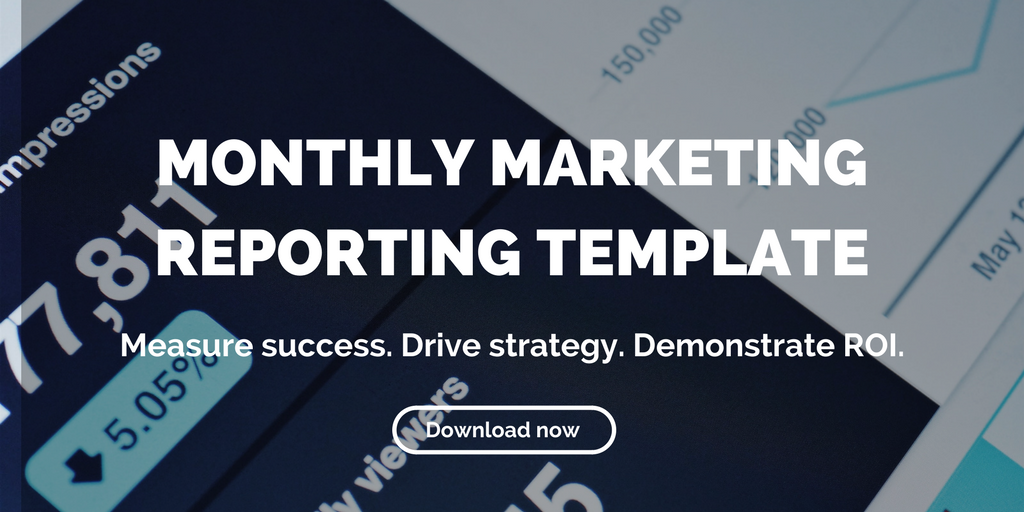Your search results for "Reliable CPC-CDE-RECERT Braindumps Sheet 🍳 Best CPC-CDE-RECERT Practice 🔚 Test CPC-CDE-RECERT Sample Questions 💉 Easily obtain free download of ▶ CPC-CDE-RECERT ◀ by searching on ☀ www.pdfvce.com ️☀️ ✊Exam CPC-CDE-RECERT Study Solutions"

How to Nurture Real Estate Leads with Content Marketing
Done right, content marketing is the most effective way out there to generate real estate leads—and to nurture them to fruition. Here’s how to make the most of this strategic resource.
If you generate a huge amount of leads, that means you’ll get an influx of new clients, right? Not so fast. Having an effective lead generation campaign is great, but it’s only half the battle. To produce actual business, you need a strategy in place to nurture real estate leads once you’ve attracted them.
An effective lead generation campaign means having a documented strategy, an effective website with strong SEO, good calls-to-action, and a robust social media presence. All of these things can be best accomplished with content marketing — and it’s your best friend when it comes to nurturing and converting those leads you’ve generated.
Nurture real estate leads with content marketing: a crash course
Before we get too far, let’s slow down and define what it means to nurture real estate leads with content marketing in the first place. In fact, real estate marketers are often so focused on generating leads, that this crucial part of the process gets overlooked.
At its most basic level, when we talk about nurturing a lead, we’re talking about continuing a conversation. When you generated the lead, you attracted the attention of a prospect, and planted the seeds of an ongoing relationship. But in order to germinate, these seeds need to be cared for — and that’s what lead nurturing is all about. You continue to stay in a conversation with your prospect from the first contact until they are ready to become a client.
Putting your content to work
“Lead nurturing campaigns focus on creating mutually-beneficial working relationships so that when it comes time to buy, that lead turns to you, or your business, instead of a competitor,” writes real estate marketing expert Vinny La Barbera. When it comes to staying at the forefront of a prospect’s mind, and successfully nurturing a real estate lead to conversion, there’s no better tool at your disposal than content marketing.
Social media is a perfect place to use content to nurture real estate leads. Connecting with your prospects, answering their questions, and sharing relevant, helpful content (particularly video!) is key to staying on your prospects’ radar.
Another effective way to use content marketing to nurture leads is with a blog. While some of your posts should be geared to generating leads, others should be written with a focus on cultivating existing relationships, and helping prospects decide to take the next steps. For real estate marketers, this means you can write about topics like the location of your properties, available features and amenities, and information about neighborhoods and communities.
Of course, email content is crucial to an effective lead nurturing strategy. The first step is to segment your email list, so that you’re creating targeted messaging for those at different stages of the buyer’s journey. Your emails should always include a call-to-action, to give prospects the opportunity to engage further with your brand and properties.
The bottom line
With any of your content marketing efforts, including nurturing real estate leads, the most important thing to keep in mind is that you are offering value to your prospects. By sharing your knowledge and expertise through your content, you’re answering the needs of your prospects and building their trust in your brand and properties.
Related posts:
- 5 Luxury Real Estate Brands that Use Content Marketing to Sell Property
- Video: How Content Marketing for Real Estate Can Help Sell Properties
- 4 Ways a Blog Can Help You Sell Real Estate
Your search results for "Reliable CPC-CDE-RECERT Braindumps Sheet 🍳 Best CPC-CDE-RECERT Practice 🔚 Test CPC-CDE-RECERT Sample Questions 💉 Easily obtain free download of ▶ CPC-CDE-RECERT ◀ by searching on ☀ www.pdfvce.com ️☀️ ✊Exam CPC-CDE-RECERT Study Solutions"

What are Google Sitelinks and Why Real Estate Marketers Need to Know About Them
Google sitelinks boost a website’s visibility and credibility, and they help users get right to what they’re looking for. Here’s what real estate marketers need to know about them.
Do you ever wonder if visitors to your website are going right to what they’re looking for? For example, if a potential buyer does a google search for properties in your area, will he or she be taken directly to listings, or need to navigate through your website first?
This is where Google sitelinks come in. These links are shortcuts, or a table of contents, designed to help users navigate to the right part of your website quickly, rather than needing to load the homepage first. Here’s why real estate marketers need to know about Google sitelinks, and how they can help market your properties.
How do they work?
If you frequent Google (and who doesn’t?), it’s likely that you’ve seen sitelinks in action. Typically, if a site is the #1 search result from a query, sitelinks will appear below the listing. To create the links, Google’s algorithm analyzes your website’s structure and content. It finds the most popular and useful content, and lists it as shortcuts below the search result.
These shortcuts “deep link” to pages within your site, like your blog, pages for specific properties, other content offers, etc. If you use Google AdWords, you’ll recognize sitelinks as very similar to the links that appear in ads—but in this case, Google chooses what links get featured.
What’s so great about Google sitelinks?
There are all kinds of benefits if you can manage to get sitelinks to appear when your website pops up in a search. In fact, having sitelinks is an excellent indicator of a website with a healthy SEO. It means that your site is properly constructed to allow Google’s algorithm to mine and sort its content thoroughly, and feature key components.
Sitelinks help to increase the chances of your most effective pages getting more visibility. Since the algorithm that sets up the table of contents for your website factors in popularity, the content on your site that has historically performed best will continue to get a boost. In the same vein, having those most effective pages be your web calling card instantly lets your audience know what you have to offer. Sitelinks helps put an emphasis on your premium content and properties.
As you might guess, Google sitelinks can significantly improve your click-through rate. Again, since your most popular pages end up front and center, there’s a greater chance that searchers will click them right away. You also get a free enhancement of your credibility, just from the fact that with sitelinks, your site takes up more space among search results, drawing the eye.
How can I get sitelinks?
Since there aren’t any official guidelines from Google on how to get sitelinks, we need to extrapolate some best practices. Here are five tips to get you started:
- Sign up for Google Analytics, and be sure to add their tracking code to your website.
- Is your Site Title unique and descriptive? Make sure it accurately reflects your business and properties, and that no one else is using it.
- Create a unique and descriptive Meta Description for each piece of content.
- Organize your main navigation menu—keep it simple. Keep your most important pages featured as the menu items, with related pages in dropdowns.
- Create cross links to and from your website’s most important pages.
Related posts:
- How to Measure Social Media ROI with Google Analytics for Real Estate
- Paid Digital Advertising: A Beginner’s Guide for Real Estate Marketers
- Learn How Content Marketing Increased Real Estate Sales by 37% in 90 Days
Your search results for "Reliable CPC-CDE-RECERT Braindumps Sheet 🍳 Best CPC-CDE-RECERT Practice 🔚 Test CPC-CDE-RECERT Sample Questions 💉 Easily obtain free download of ▶ CPC-CDE-RECERT ◀ by searching on ☀ www.pdfvce.com ️☀️ ✊Exam CPC-CDE-RECERT Study Solutions"

How to Use Instagram for Real Estate Marketing
Instagram is a natural fit for real estate. Here’s what you need to know about using Instagram for real estate marketing.
Highlights:
- Instagram content needs to be consistent in tone and timing, visually appealing and engaging.
- Instagram Stories and Highlights are ideal ways for real estate marketers to give users a look into their brand.
- Hashtags promote engagement and raise brand awareness.
With its highly visual platform, robust Stories feature, and growing user base, Instagram is a natural fit for real estate marketing. The platform boasts over 500 million users and 4.2 billion likes per month. Used strategically, it’s an ideal place to showcase your properties and brand.
Real estate marketers should be aware that Instagram requires a different content and posting strategy from Facebook, Twitter, LinkedIn, or other social media platforms. For example, engagement on Instagram is ten times higher than it is for Facebook, and the demographic is substantially more affluent — making it a no-brainer for luxury real estate.
In general, marketers have been relatively slow to adopt Instagram for real estate marketing, a puzzling reality given its overall popularity and natural fit for the visual nature of real estate. But savvy marketers, like these five real estate accounts for example, have figured out how to use this platform to great success.
Instagram for real estate marketing — the right kind of content
Instagram is a fantastic platform for engaging users. But to get the most out of it, it’s important for real estate marketers to post the right kind of content. Obviously, Instagram is a highly visual medium. It lends itself to beautiful, arresting images, and pitchy hashtags.
Keep your content and visual style consistent. Your profile is your calling card on the platform and should reflect the overall tone you want to set for your brand. This also means posting content at a consistent rate, ideally 2-3 times a day.
Chances are, you’ve had fun playing with Instagram filters. But you may not know that certain lighting and color presets perform better than others. According to Iconosquare, the most popular filters currently on Instagram include Clarendon, Juno, Lark, and Ludwig — and they really do have an impact on engagement.
In order to determine the best types of content to engage your target audience, keep an eye on your competitor and peer brands’ presence on the platform. You can also make use of Instagram analytics tools to track, analyze, and benchmark your Instagram content.
Instagram Stories and Highlights
When the feature was first introduced, Instagram Stories was a gamechanger for the ways in which users interact on social media. Stories are sequences of content that users post to their Instagram accounts over a 24-hour period. Besides photos, Stories can include videos, live and prerecorded, as well as Boomerangs, seconds-long motion clips that play forward and backward.
Stories can also be customized with various design tools, including stickers and filters. Notably for real estate marketers, these tools include location tags, as well as time, weather, or holiday greetings. Audiences can view the Stories of the users they follow within the 24-hour window after they are posted. They can find users with active Stories by scrolling the user icons at the top of the app. Or users can tell their followers that they’ve posted a story by tagging them, which notifies them through a direct message.
For brands, Stories offer the invaluable feature of having metrics wrapped into the experience. The feature allows you to track not only how many views your story has received, but exactly which users have viewed it, and how they interacted with it.
In addition to its Stories feature, Instagram now lets users create a featured group of “Highlights” in various categories on their profile. Stories have only a 24-hour lifespan, so featuring your most effective Stories clips in Highlights gives them a second life, and a chance to engage future followers.
Hashtags
One of the most effective ways to grow your Instagram following is to use hashtags effectively. Since Instagram gives users the ability to follow hashtags that interest them, and they function as links to other relevant content, choosing the right hashtags is the ideal way to reach and engage your target audience.
Keep an eye on accounts of peer brands, to stay up to date with the best hashtags to be using. The most effective hashtags are short, memorable, and easy to read. You can also use a free online tool like InconoSquare or Websta to find relevant hashtags for the real estate industry. For much more, check out our guide to using hashtags for real estate marketing.
If you want engagement, engage
It’s easy to forget that the fundamental benefit of social media is that it’s social. Users want to be part of a conversation. Encourage your followers to interact with you on all your social media platforms, including Instagram. This means responding to comments and brand mentions, as well as engaging with your followers’ content.
Starting and fostering a conversation with your followers and peer brands on Instagram is a key to getting the most out of this platform. Encouraging interaction helps drive brand awareness, and lead generation for your properties. Now, the time has come for you to master Instagram for real estate marketing.
Related Posts
- How to Use Social Media Hashtags in Real Estate Marketing
- Real Estate Instagram Accounts You Should be Following
- Social Media Trends for 2018 Real Estate Marketers Need to Know
Your search results for "Reliable CPC-CDE-RECERT Braindumps Sheet 🍳 Best CPC-CDE-RECERT Practice 🔚 Test CPC-CDE-RECERT Sample Questions 💉 Easily obtain free download of ▶ CPC-CDE-RECERT ◀ by searching on ☀ www.pdfvce.com ️☀️ ✊Exam CPC-CDE-RECERT Study Solutions"

Must-Know Social Media Strategies for Real Estate
Social media fits real estate marketing like a glove—but only if it’s done right. These social media strategies for real estate will help you effectively tap into new sources of leads.
Real estate is a people business. That’s why you should leverage a marketing tool that is also all about people: social media.
If you have not begun developing social media strategies for your real estate business, now is the time to get started.
Consider for a minute that in 2017, 81% of Americans had at least one social media profile. And the numbers are projected to continue skyrocketing: by 2020, 200 million people just in the U.S. are estimated to be on social media.
And it’s not just your high school friends, and distant relatives who are all over Facebook—professional marketers are tapping into social media in a big way. A recent survey of marketing professionals found that 41% plan to up their social media marketing budgets “significantly” in 2018.
Social media strategies for real estate make a lot of sense. But that doesn’t mean that all social media use is good for your brand—the key is to use it the right way. As Bubba Mills, chief executive officer of Corcoran Consulting & Coaching, puts it, “Done right, social media can increase your trips to the bank. Done poorly, it can drive you to the poor house.”
These three strategies will help you ensure that social media takes your real estate business to the bank.
1. Know what’s out there
You’ll often hear people talk about “social media” like it’s a monolithic entity. In fact, every social media platform is unique, and comes with its own set of challenges and advantages. As you think about what content to post, consider what platform will best serve your own social media strategies for real estate.
Facebook and Twitter are ever-popular, and nearly any content can be tweaked to make sense on these platforms. More visual platforms, like Instagram and Pinterest, are ideal for showcasing properties or visual content like a before/after feature. To connect with target businesses or other industry professionals, LinkedIn is likely your best bet.
2. Be a resource: a key social media strategy for real estate
We hardly need to tell you social media is a nexus for the best and worst. When your prospects scroll through their newsfeeds, they wade through a tremendous amount of useless information. Your goal should be to grab their attention with a standout topic, and keep that attention and interest by providing value to your audience.
“When you write your social media posts, think of yourself as a teacher, not a salesperson,” says Mills. “Educate with solid facts and materials readers can use.” Establishing yourself as a trusted resource ensures a lasting and fruitful relationship with your audience.
3. Keep your eye on the prize
As with any marketing endeavor, a crucial first step is a strategy. Social media marketing is no different. A clear, documented social media strategy for real estate, with measurable goals and a mechanism for collecting data on its effectiveness is crucial for success. In the end, it’s all about generating leads—but it’s important not to forget all the steps on the way to this overarching goal.
Used wisely, social media can help build your brand, engage your potential buyers and renters, generate leads, and establish your reputation as a trusted resource.
Related posts:
- 10 Social Media Statistics for Real Estate Marketers 2018
- A Visual Guide to Social Media Posting Frequency for Real Estate
- Social Media Can Be a Strategic Weapon in Real Estate Marketing
Your search results for "Reliable CPC-CDE-RECERT Braindumps Sheet 🍳 Best CPC-CDE-RECERT Practice 🔚 Test CPC-CDE-RECERT Sample Questions 💉 Easily obtain free download of ▶ CPC-CDE-RECERT ◀ by searching on ☀ www.pdfvce.com ️☀️ ✊Exam CPC-CDE-RECERT Study Solutions"

Real Estate Marketing Leads: 4 Myths (and How to Disprove Them)
Don’t let these four myths get in the way of creating an effective strategy for capturing real estate leads.
Highlights:
- As you start to develop your lead-capture strategy, don’t let certain myths and misunderstandings derail your efforts.
- If you confine yourself to one or even two methods of finding leads, you’re unnecessarily limiting your potential.
- The better you understand your prospects, the more you’ll be able to meet their needs and turn them into customers.
One of the most pressing challenges for all real estate professionals is to get a steady supply of real estate leads. But as you start to develop your lead-capture strategy, don’t let certain myths and misunderstandings derail your efforts.
Let’s look at four of the top myths when it comes to real estate leads.
Myth #1: Real estate leads that don’t buy immediately are worthless
It can be tempting to fall into black-and-white thinking when it comes to leads. When prospects don’t show an immediate interest in making a purchase, you might dismiss them as dead leads. That’s a mistake in any field, but especially in the realm of real estate. The only leads that are truly dead or worthless are ones where you have no accurate contact information, or they have specifically told you not to contact them again.
Just because a lead doesn’t require your services right now doesn’t mean he or she never will. Real estate purchasing is closely tied to people’s circumstances, which can change over time. That’s why it makes sense to look at every promising lead as a long-term prospect with whom you should periodically follow up.
Myth #2: There’s only one way to find leads
Real estate marketers have a wide selection of lead generating strategies to choose from. These include:
- Advertising (online and offline)
- Social media
- Billboards
- Blogging: A real estate blog is a powerful way to build your credibility as well as SEO.
- Direct mail
You may develop certain preferences for finding leads. However, if you confine yourself to one or even two methods, you’re unnecessarily limiting your potential. An omnichannel lead generating strategy is your best approach.
It’s good to combine high-tech and old-school methods, for example. You certainly need to take advantage of digital marketing, which includes an up-to-date website and social media presence. At the same time, offline strategies are still effective as well. The more ways you have to engage with prospects, the more qualified leads you’ll attract.
Myth #3: It’s more important to acquire leads than to nurture them
Lead generation is only the first step in the real estate marketing process. If you’re too caught up in the lead generation process, you may only make a brief effort with each lead before putting it aside and looking at the next one. Instead, you need to think in terms of lead management and nurturing. This includes:
- Segmenting leads so you know what type of offers to put in front of each prospect. This is fairly easy to do with web leads. You can, for example, set up separate SEO, social media, and email marketing campaigns based on different keywords and topics.
- Learning the best ways to contact each lead. Some people prefer to be contacted by phone, email, or social media, for example.
- Following up regularly. You don’t want to bombard prospects with messages. However, you do want to be proactive and reach out to leads every so often.
Lead nurturing and management really come down to building relationships with prospects.
Myth #4: Once you’ve closed, you can neglect the lead
Closing a sale is always exhilarating. You shouldn’t, however, think of a successful closing as the end of the process. Think of it, rather, as the start of a long-term, mutually beneficial relationship. It’s important to show clients that you care about them, even after the sale.
- Ask clients to complete a survey. This provides insight into areas where you can improve.
- Send holiday and birthday greetings.
- Send occasional emails or make calls asking if there’s anything you can do for them.
- Request referrals. Your past clients are often one of your best sources for finding future clients.
Avoid These Myths
Make sure you recognize these myths for real estate leads so you don’t fall prey to them. It’s important to remember that each lead is a unique individual with specific characteristics and preferences. Many mistakes occur when business owners and investors generalize too much about their leads. The better you understand your prospects, the more you’ll be able to meet their needs and turn them into customers.
Related posts:



